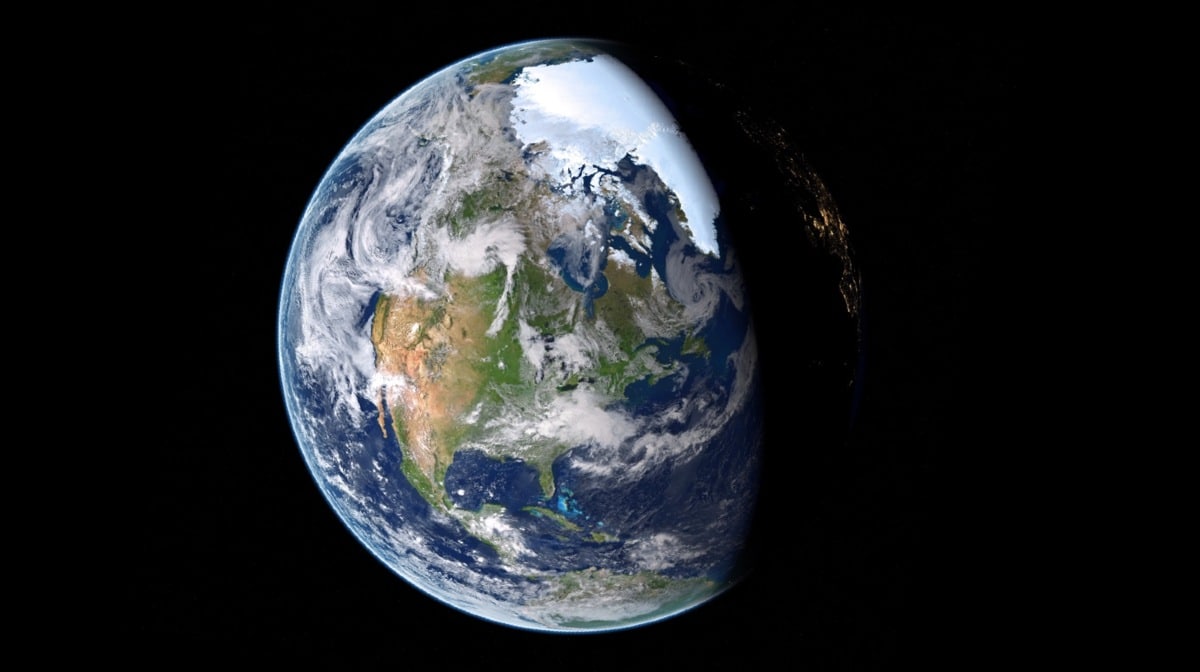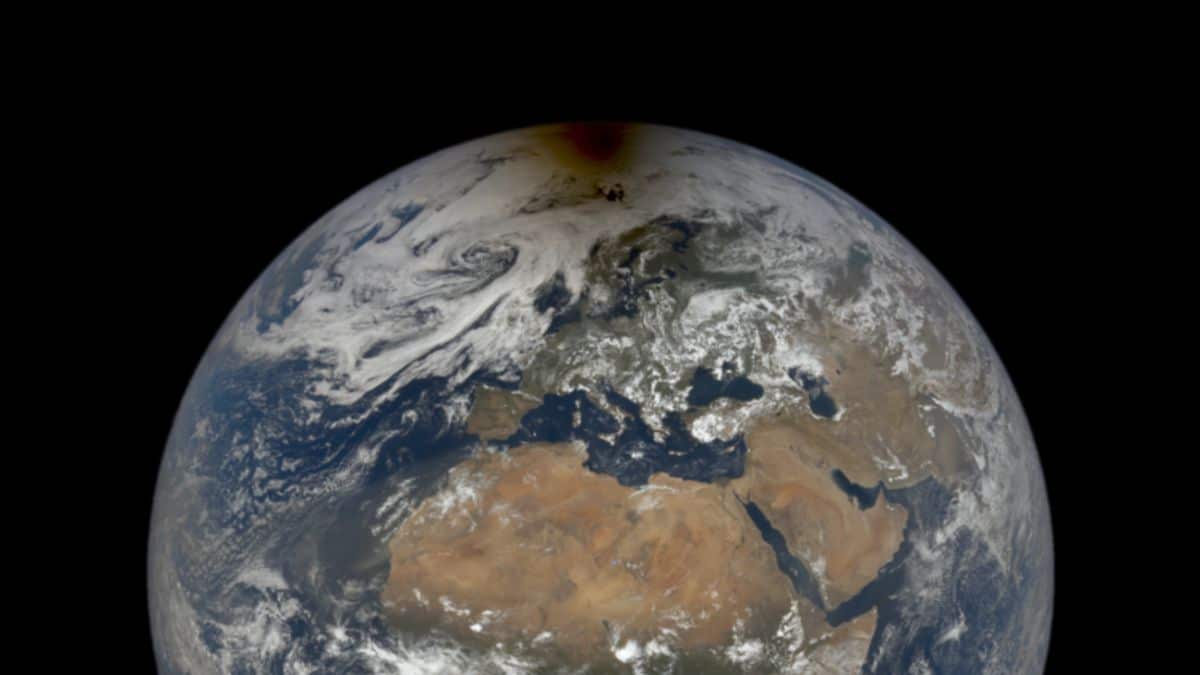
Our planet was turned upside down 84 million years ago when dinosaurs walked the earth. More precisely, a phenomenon called real pole shift occurs, capable of changing the inclination of a celestial body with respect to its axis and causing a "wobble". There are some studies that confirm that the earth can tip on its axis and this can cause serious problems for humanity and life as we know it.
For this reason, we are going to dedicate this article to telling you how the Earth can turn on its axis and what consequences it can have.
Earth can tip on its axis

A true pole shift occurs when Earth's geographic north and south poles shift significantly, causing the solid crust to flip into the liquid upper mantle that protects the core. Neither the magnetic field nor life on Earth were affected, but the displaced rock recorded the disturbance in the form of paleomagnetic data.
"Imagine you're looking at Earth from space," explains Joe Kirschvink, a geologist at the Tokyo Institute of Technology in Japan, and one of the authors. "True polar drift gives the impression that the planet is tilting to one side, when what is actually happening is that the rocky surface (solid mantle and crust) swirls above the liquid mantle and around the outer core" .
"Many rocks recorded the orientation of the local magnetic field as they formed, similar to how tape records music," the institute explained in a statement. For example, the tiny magnetite crystals that form magnetosomes help various bacteria orient themselves and align precisely with magnetic poles. As the rocks solidified, they became trapped and formed "microscopic compass needles," indicating where the pole was and how it was moving during the late Cretaceous.
Also, this record of the magnetic field lets us know how far the rock is from the edge: in the northern hemisphere, if it's perfectly vertical, it means it's at the pole, while if it's horizontal, that puts it at the equator. A change in the orientation of the layers corresponding to the same era would indicate that the planet "wobbles" on its axis.
Studies on whether the Earth can tip on its axis

To find signs of this phenomenon, another author, Professor Ross Mitchell of the Institute of Geology and Geophysics in Beijing, China, recalled a perfect spot he analyzed as a student. This is Lake Apiro, in the Apennine mountains, in central Italy, where limestone was formed exactly at the time he was interested in investigating: between 1 and 65,5 million years ago, the approximate date of the extinction of the dinosaurs.
Driven by the true polar wander hypothesis, data collected on Italian limestone suggests the Earth tilted about 12 degrees before correcting itself. After tilting, or "capsizing", our planet changed course and eventually drew an arc of nearly 25°, which the authors define as a "full offset" and a "cosmic yo-yo" lasting about 5 million years.
Previous research denied the possibility of a true polar wander at the end of the Cretaceous period, betting on the stability of the Earth's axis during the last 100 million years, "without collecting enough data from the geological record," the paper's authors noted. "That's one of the reasons this study and its wealth of beautiful paleomagnetic data is so refreshing," geophysicist Richard Gordon of Rice University in Houston added in the comments.
Scientific explanation

The Earth is a layered sphere with a solid metal inner core, a liquid metal outer core, and a solid mantle and crust that dominate the surface on which we live. They all spin like a top, once a day. Because Earth's outer core is liquid, the solid mantle and crust can slide over it. Relatively dense structures, such as subducting oceanic plates and large volcanoes like Hawaii's, prefer to be closer to the equator.
Despite this crustal displacement, the Earth's magnetic field is generated by currents in the convective liquid metal Ni-Fe in the outer core. On long time scales, the movement of the overlying mantle and crust does not affect the Earth's core, because those overlying rock layers are transparent to Earth's magnetic field. Instead, convection patterns in this outer core are forced to dance around Earth's axis of rotation, meaning that the general pattern of the Earth's magnetic field is predictable, spreading out in the same way that iron filings line up on little magnetic rods.
So the data gives excellent information about the geographic orientation of the north and south poles, and the tilt gives the distance from the poles (vertical field means you're at the poles, horizontal field means you're at the equator). Many rocks record the direction of local magnetic fields as they form, much like tape records music. For example, tiny crystals of the mineral magnetite produced by some bacteria actually line up like tiny compass needles and become trapped in sediment as the rock solidifies. This "fossil" magnetism can be used to track where the axis of rotation has moved relative to the Earth's crust.
"Imagine looking at Earth from space," explains study author Joe Kirschwenk of the Tokyo Institute of Technology, where ELSI is based. "True polar drift looks like the Earth is tilting to one side, when what's really happening is the entire rocky outer shell of the Earth (solid mantle and crust) rotating around the liquid outer core." A true polar drift has occurred, but Geologists continue to debate whether large rotations of the Earth's mantle and crust have occurred in the past.
I hope that with this information you can learn more about whether the Earth can turn on its axis.